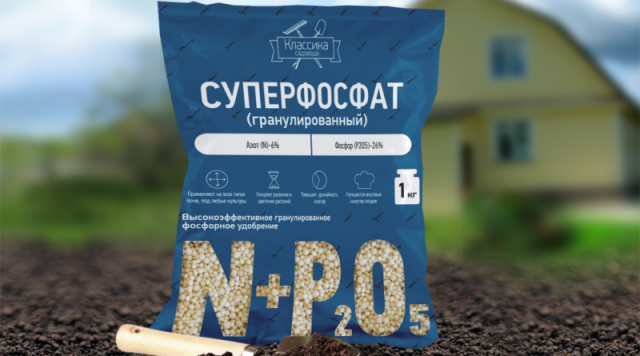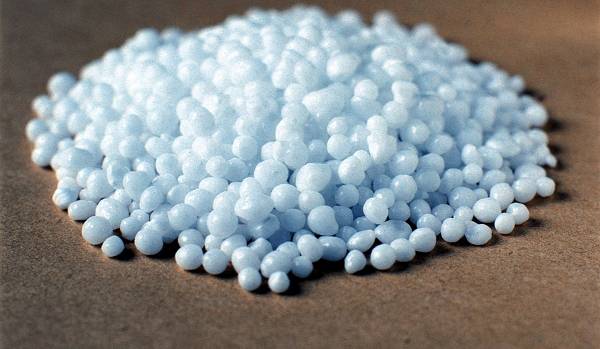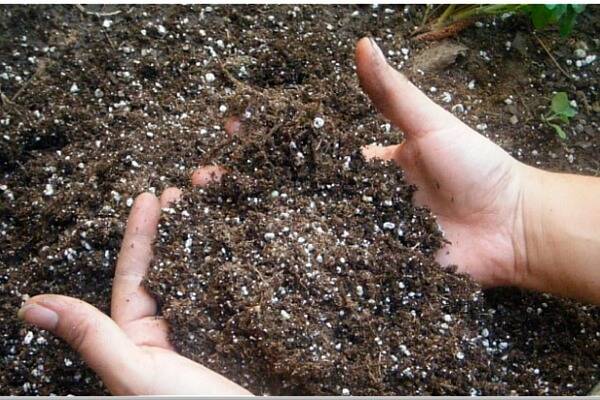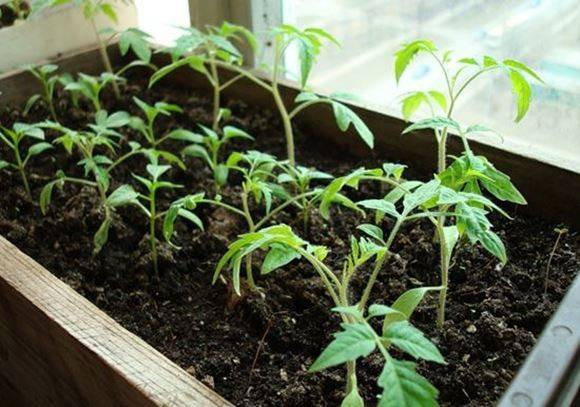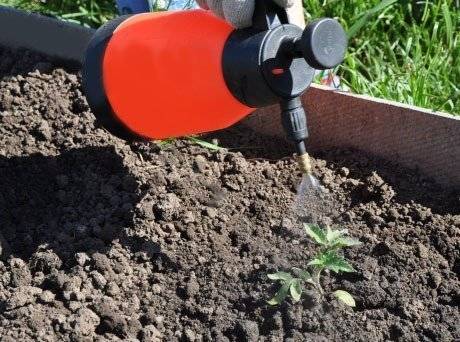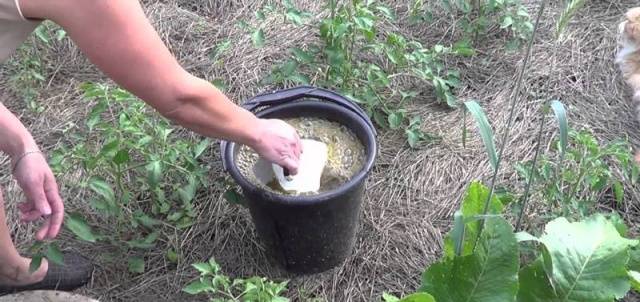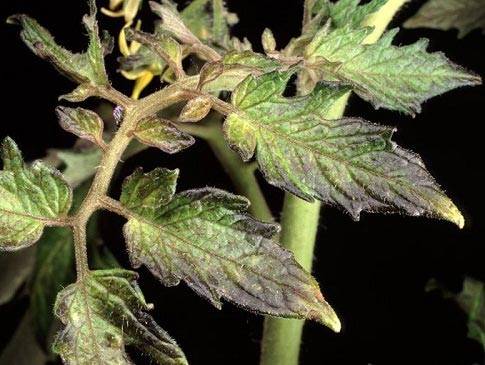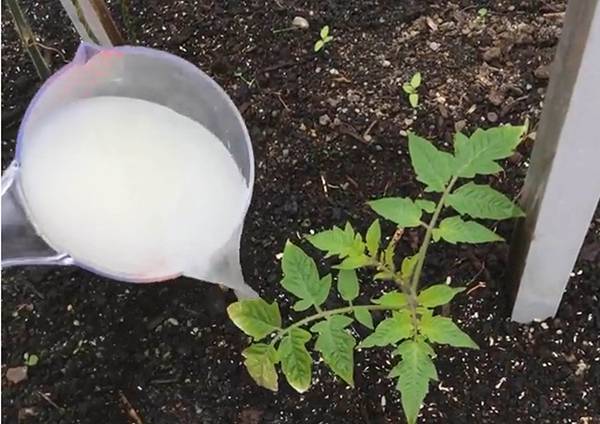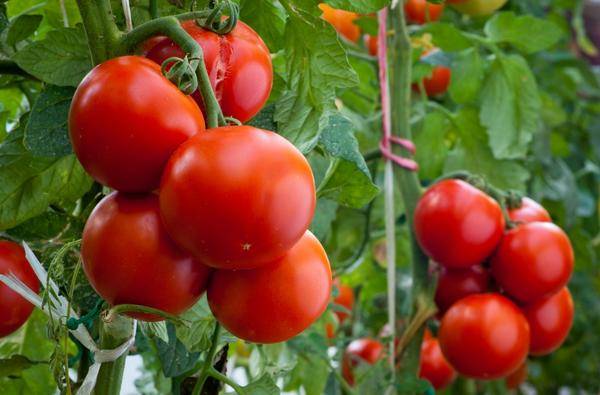Content
Phosphorus is essential for all plants, including tomatoes. It allows you to absorb water, nutrients from the soil, synthesize them and transfer them from the root to the leaves and fruits. By providing normal nutrition to tomatoes, the trace mineral makes them strong, resistant to weather and pests. There are many phosphate fertilizers available for feeding tomatoes. They are used at all stages of crop cultivation. For example, adding superphosphate to the soil and feeding tomatoes allows you to get a good harvest without problems and hassle. Learn in detail about when and how to use fertilizer superphosphate for tomatoes can be found below in the article.
Types of superphosphate
Among all phosphorus-containing fertilizers, superphosphate takes the leading place. It is he who is often used by gardeners for feeding various vegetable and berry crops. However, superphosphate is also different. Arriving at the store, you can see simple and double superphosphate. These fertilizers differ in their composition, purpose, method of application:
- Simple superphosphate contains about 20% of the main trace element, as well as a certain amount of sulfur, magnesium and calcium. Manufacturers offer this fertilizer in powder and granular form. It is perfect for soil of any nutritional value. Tomatoes are always responsive to feeding with simple superphosphate. It can be used for autumn or spring digging of soil, for insertion into the hole during planting of seedlings, for root and foliar feeding of tomatoes.
- Double superphosphate is a highly concentrated fertilizer. It contains about 45% of easily assimilable phosphorus. In addition to the main trace element, it contains magnesium, calcium, iron and some other substances. It is used at the stage of soil preparation for growing tomatoes, as well as for feeding tomatoes by watering at the root no more than 2 times during the entire growing season. The substance can replace simple superphosphate when the concentration of the solution is halved.
Single and double superphosphate can be found in powder and granular form. Substances can be used dry for embedding in soil or in the form of an aqueous solution, extracts for watering and spraying tomatoes. Add double superphosphate to priming recommended in the soil in autumn, so that it has time to spread throughout the entire mass of the soil, thereby reducing the concentration of the basic substance.
On sale you can find ammoniated, magnesia, boric and molybdenum superphosphate. These types of fertilizers, in addition to the main substance, contain additional ones - sulfur, potassium, magnesium, boron, molybdenum. They can also be used to feed tomatoes at various stages of growing. So, ammoniated superphosphate is recommended to be introduced into the soil when planting seedlings for better rooting of plants.
Introduction of a trace element into the soil
For growing tomato seedlings, the soil can be prepared by mixing sand, turf and peat. The resulting mixture must be disinfected and filled with nutrients. So, in order to obtain a good, nutritious substrate, it is necessary to add 1 part of sod land and 2 parts of sand to 3 parts of peat. Additionally, you can add sawdust treated with boiling water in the amount of 1 part.
Fertilizers must be added to the soil for growing seedlings.In 12 kg of substrate, add 90 g of simple superphosphate, 300 g of dolomite flour, 40 g potassium sulfate and urea in the amount of 30 g. The resulting trace element mixture will contain all the necessary substances for the successful growth of strong seedlings.
The soil in which tomato seedlings are to be planted must also be filled with minerals. During the autumn digging into the soil for every 1 m2 it is necessary to add 50-60 g of simple superphosphate or 30 g of double fertilization. Introduce substances directly into the hole before planting seedlings should be at the rate of 15 g per 1 plant.
It should be noted that sprinkling superphosphate over the soil is not effective, since tomatoes are only able to assimilate it in a wet state at the depth of the roots or when spraying liquid fertilizer over the leaves of the plant. That is why, when applying fertilizer, it is necessary to embed it in the soil or prepare an extract, an aqueous solution from it.
Top dressing of seedlings
The first feeding of tomatoes with fertilizer containing phosphorus must be carried out 15 days after the dive of young plants. Previously, it was recommended to use only nitrogen-containing substances. The second fertilization of seedlings with phosphorus should be performed 2 weeks after the day of the previous fertilization.
For the first feeding, you can use a nitrophoska, which will contain the required amount of potassium, phosphorus and nitrogen. This fertilizer is diluted in water based on the ratio: 1 tablespoon of the substance per 1 liter of water. This volume of liquid is enough for watering 35-40 plants.
Prepare top dressing, similar in composition nitrophoske you can by mixing 3 tablespoons of superphosphate with 2 tablespoons of potassium sulfate and the same amount of ammonium nitrate. Such a complex will contain the necessary substances for the growth and development of tomato seedlings. Before adding, all of these components must be dissolved in 10 liters of water.
Also, for the first feeding of tomato seedlings, you can use "Foskamid" in combination with superphosphate. In this case, to obtain fertilizer, it is necessary to add substances in the amount of 30 and 15 g, respectively, to a bucket of water.
For the second feeding of tomato seedlings, you can apply the following phosphate fertilizers:
- if the seedlings look healthy, have a strong trunk and well-developed foliage, then the preparation "Effecton O" is suitable;
- if there is a lack of green mass, it is recommended to feed the plant with an "Athlete";
- if tomato seedlings have a thin, weak stem, then it is necessary to feed the tomatoes with superphosphate, prepared by dissolving 1 tablespoon of the substance in 3 liters of water.
After carrying out two mandatory dressings, tomato seedlings fertilize as needed. In this case, you can use not only root, but also foliar dressing. Phosphorus is perfectly absorbed through the leaf surface, therefore, after spraying tomatoes with a solution of superphosphate or other phosphate fertilizer, the effect will come in a few days. You can prepare a spray solution by adding 1 spoon of the substance to 1 liter of hot water. This solution is highly concentrated. It is insisted for a day, after which it is diluted in a bucket of water and used to spray seedlings.
A week before the expected planting of plants in the ground, it is necessary to carry out one more root feeding of seedlings with fertilizer prepared from superphosphate and potassium sulfate. To do this, add 1.5 and 3 tablespoons of each substance to a bucket of water, respectively.
In the preparation of dressings, its amount should be halved.
Thus, phosphorus is extremely necessary for tomatoes at the stage of growing seedlings. It can be obtained by using ready-made complex preparations or by adding superphosphate to a mixture of mineral substances. Also superphosphate can be applied as the main and only component for the preparation of root and foliar dressings.
Top dressing of tomatoes after planting
Fertilizing tomato seedlings with phosphorus is aimed at the development of the root system of the plant. Seedlings poorly assimilate this trace element, therefore it is necessary to use superphosphate in the form of an extract or solution. Adult tomatoes are capable of absorbing simple and double superphosphate well. Plants use 95% of phosphorus for the formation of fruits, which is why superphosphate should be actively used during flowering and fruiting.
10-14 days after planting tomatoes in the ground, you can feed them. To do this, you should use a complex fertilizer containing nitrogen, potassium and phosphorus or organic matter with the addition of superphosphate. So, infusion of mullein is often used: add 500 g of cow dung to 2 liters of water, and then insist the solution for 2-3 days. Before use for tomatoes, dilute mullein with water 1: 5 and add 50 g of superphosphate. Such a top dressing for a tomato will contain the entire range of essential minerals. You can use it 2-3 times during the entire growing period.
How to determine the lack of phosphorus
For feeding tomatoes, organic fertilizers with the addition of superphosphate or complex mineral fertilizers containing phosphorus are often used. The frequency of their use depends on the fertility of the soil and the condition of the plants. As a rule, 2-3 dressings are used on soils of medium nutritional value; on poor soils, 3-5 dressings may be needed. However, sometimes tomatoes that receive a complex of trace elements show symptoms of phosphorus deficiency. In this case, it is recommended to use superphosphate fertilizer extraordinary times.
In tomatoes, signs of phosphorus deficiency are:
- discoloration of leaves. They turn dark green, sometimes they take on a purple tint. Also, a characteristic sign of a lack of phosphorus is the curling of the leaves inward;
- the stem of the tomato becomes brittle, brittle. Its color turns purple with phosphorus starvation;
- the roots of tomatoes wither, cease to consume nutrients from the soil, as a result of which the plants die.
You can see the lack of phosphorus in tomatoes and hear the comments of an experienced specialist in solving the problem on the video:
When observing such symptoms, tomatoes must be fed with superphosphate. For this, a concentrate is prepared: a glass of fertilizer for 1 liter of boiling water. Insist the solution for 8-10 hours, then dilute it with 10 liters of water and pour 500 ml of tomatoes under the root for each plant. Superphosphate extract prepared according to the classic recipe is also excellent for root feeding.
You can also compensate for the phosphorus deficiency by foliar feeding: a spoonful of superphosphate per 1 liter of water. After dissolving, dilute the concentrate in 10 liters of water and use for spraying.
Superphosphate extract
Superphosphate for feeding tomatoes can be used as an extract. This fertilizer has an easily accessible form and is quickly absorbed by tomatoes. The hood can be prepared using the following technology:
- add 400 mg of superphosphate to 3 liters of boiling water;
- put the liquid in a warm place and stir periodically until the substance is completely dissolved;
- insist the solution throughout the day, after which it will look like milk, which means that the hood is ready for use.
The instructions for use of the hood recommends diluting the ready-made concentrated solution with water: 150 mg of the extract per 10 liters of water. You can make a complex fertilizer by adding 1 spoon of ammonium nitrate and a glass of wood ash to the resulting solution.
Other phosphate fertilizers
Superphosphate is a self-contained fertilizer that can be purchased in specialized stores and used as a top dressing for tomatoes. However, other fertilizers with a high phosphorus content have been offered to farmers:
- Ammophos is a complex of nitrogen (12%) and phosphorus (51%). The fertilizer is water-soluble and easily absorbed by tomatoes.
- Nitroammophos contains equal amounts of nitrogen and phosphorus (23%). It is necessary to use fertilizer with slow growth of tomatoes;
- Nitroammofosk contains a complex of nitrogen with potassium and phosphorus. There are two brands of this fertilizer. Grade A contains potassium and phosphorus in the amount of 17%, grade B in the amount of 19%. It is quite simple to use nitroammophoska, since the fertilizer is easily soluble in water.
It is necessary to use these and other phosphate substances in accordance with the instructions for use, since an increase in dosage can lead to an excess content of a trace element in the soil. Symptoms of phosphorus oversaturation are:
- accelerated growth of stems without enough leaves;
- rapid aging of the plant;
- the edges of tomato leaves turn yellow or brown. Dry spots appear on them. Over time, the leaves of such plants fall off;
- tomatoes become especially demanding on water and, at the slightest lack, begin to actively wither.
Let's summarize
Phosphorus is very important for tomatoes at all stages of growing. It allows the plant to develop harmoniously and correctly, consuming other trace elements and water from the soil in sufficient quantities. The substance allows you to increase the yield of tomatoes and make the taste of vegetables better. Phosphorus is especially necessary for tomatoes during flowering and fruiting, because each 1 kg of ripe vegetables will contain 250-270 mg of this substance and after eating such products will become a source of useful phosphorus for the human body.
